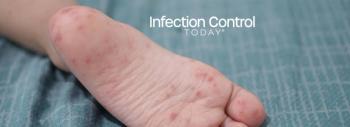
Novel Trick Helps Rare Pathogen Infect Healthy People
New research into a rare pathogen has shown how a unique evolutionary trait allows it to infect even the healthiest of hosts through a smart solution to the body's immune response against it. Scientists at the University of Birmingham have explained how a particular strain of a fungus, Cryptococcus gattii, responds to the human immune response and triggers a 'division of labor' in its invading cells, which can lead to life-threatening infections.
Once inhaled, the pathogen can spread through the body to cause pneumonia or meningitis. The outbreak strain of this fungus differs significantly from other strains because it threatens the lives of healthy people – those with a strong immune response – rather than those usually considered at risk of infection.
Professor Robin May, from the University of Birmingham, explains, "It is important to point out that the risk to any individual is still very low: the fungus is non-contagious and cannot be passed between humans, or indeed from animals to humans, so we're not presenting a doomsday scenario here. But by understanding how this particular lineage behaves once in the body, we have provided an insight into the key mystery of why it is virulent in immunocompetent people – that is those with a strong immune system."
When invaded by an outbreak strain, the host body creates reactive oxygen species (ROS). ROS form an essential part of the antimicrobial defence in mammals and works to prevent the spread of harmful pathogens by cleansing the body of invasive cells. A strong ROS reaction usually makes people less susceptible to infections, but in the case of Cryptococcus gattii the tables are turned and the fungus uses this reaction to its own benefit.
The study, published in Nature Communications, outlines how the unique pathogen uses the release of ROS as a signal to trigger a 'division of labor' in the intracellular fungal population.
May adds, "We don't often think of invasive cells working as a team, if you will, but this seems to be a smarter response. When they encounter ROS, the cells adopt different roles. Some sacrifice themselves for the benefit of others, and form a protective barrier that allows the rapid growth of neighbouring cells – allowing the establishment of the pathogen. This isn't something that we've seen before."
The outbreak is believed to infect humans who inhale spores or yeast from soil or leaves of certain tree species, such as Eucalyptus and some fir species. Though most people don't become infected, those that do tend not to experience any effects until between two and fourteen months after exposure.
Treatment of the disease is usually a combination of IV therapies and anti-fungal medication.
The disease, once thought to be restricted to tropical regions, gained attention after a reported case in British Columbia, Canada in 1999. Over 450 cases have since been reported in North America, making it the largest ever outbreak of a life-threatening fungal infection in healthy people.
Previous research has sought to identify how this particular lineage of Cryptococcus gattii came to appear in North America from a likely origin in the Amazon Rainforest. A number of suggestions have been put forward, from climate change to the migratory patterns of humpback whales, though Professor May is sceptical.
"It's unlikely that climate change, or indeed whale migration, is behind this. However it got there, though, it really is a fascinating story of evolution. Cryptococcus gattii displays unique traits and has adapted to new environments in such a way that it presents us with a chance to make huge strides in understanding how these pathogens operate and, hopefully, make sure we are a well prepared to deal with future outbreaks," May says.
Source: University of Birmingham
Newsletter
Stay prepared and protected with Infection Control Today's newsletter, delivering essential updates, best practices, and expert insights for infection preventionists.






